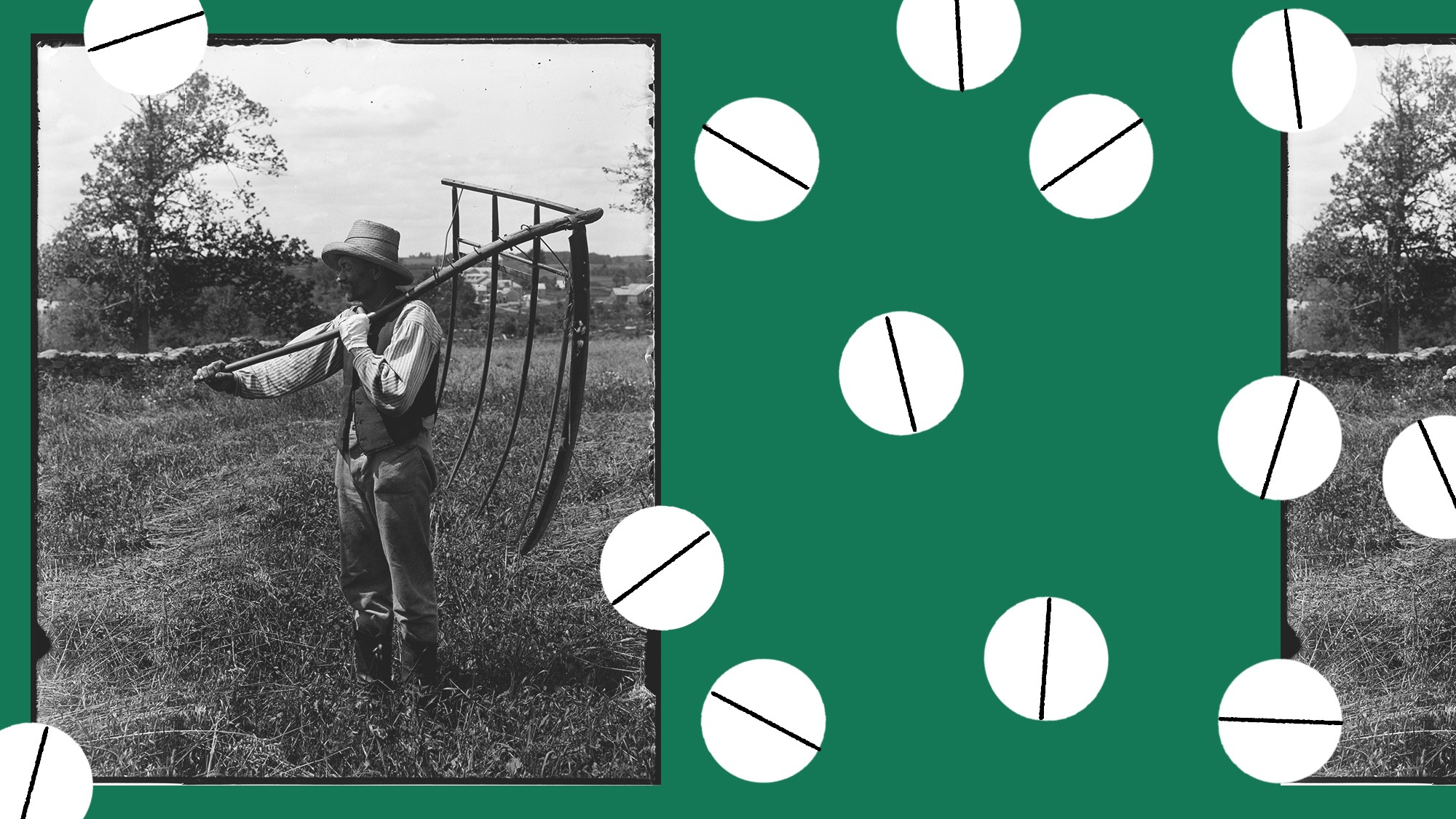A sudden and mysterious outbreak of communicable disease began recently in my apartment building in Manhattan. Three 7-year-olds, a boy and two girls, were sharing the elevator one day with a caretaker and a random adult (me). The boy was leaning against the back of the elevator, between the two girls. “Help! I’m in a girl sandwich,” he said. “If I’m not careful, I’m going to get cooties!”
“Kids still play Cooties?” I asked, surprised that cooties were not a relic of my Boomer childhood but had endured into the 21st century, still sparking alarm, feigned or real, among the young. “Yeah-huh,” the boy said. One of the girls piped up: “I know how to give a cootie shot.” She demonstrated on her own shoulder, her technique a bit of a blur.
The kids and their caretaker got off on their floor, leaving me to ponder the cootie phenomenon for the first time in many decades. Beyond being amused, I was struck by the morbid salience of a children’s game that mimics infection at a time when vaccine skepticism is on the rise and an outbreak of a non-pretend disease, measles, is threatening the lives of children in the Southwest. I learned that there is a vibrant if slender slice of academic literature on “preadolescent cootie lore,” as one scholar puts it, and that this goofy grade-school fixation is more closely tied to real public-health concerns than you might think if your cootie expertise derives only from the playground.
What exactly are cooties? Since at least the 1960s, field researchers have collected definitions of varying specificity from grammar-school respondents: “boys’ germs,” “girls’ germs,” “something that kills you,” “like germs, it has germs on it,” “where somebody licks the bottom of the chair or eats paper.” Other experts speak of cooties in more anthropological terms. The University of Wisconsin at Milwaukee folklorist Simon J. Bronner has characterized cooties as a “ritualized affliction.” In their seminal 1976 book, One Potato, Two Potato: The Folklore of American Children, Herbert and Mary Knapp described cooties as a kind of sport. “There are no supervised Cootie leagues, but more people in the United States have played Cooties than have played baseball, basketball, and football combined,” they wrote. “It’s our unofficial national game.”
Cooties certainly have something to do with hygiene. According to a (somewhat gross) analysis by Lawrence A. Hirschfeld, an anthropologist at the New School for Social Research, cooties are “a social contaminant that pass from one child to another,” made up of “the invisible particulates associated with germs, farts, or ‘boogers.’” They seem to draw upon children’s anxieties about illness and doctors but also gender, reflecting the confusing mix of flirtation and social opprobrium attached to boy-girl relations (and not entirely absent from adult life). Beyond that, Hirschfeld concludes, “Cootie lore is not conceptually orderly.”
Cootie history is clearer. The word itself began life as a British colonial term, probably a corruption of kutu, a Malay word for lice and other biting insects. American soldiers picked it up, as it were, from their allies during World War I. A New York Times report from 1918, headlined “Doughboys Lose Cooties,” described soldiers who “scratch with a vengeance” lining up at a “Disinfecting Plant” run by the American Red Cross. One “lanky New England lad” exclaims, “I’ve got all the cooties in France.” In the 1920s, games referencing cooties became popular at bridal showers, in honor of grooms who had served in Europe (and also provoked, perhaps, by sublimated anxiety about other communicable diseases they might have brought home). One version involved drawing separate parts of a bug, based on rolls of a dice, until a winner had a completed louse. This practice evolved into Cootie, the game in which kids assemble plastic insects with fiddlehead-fern-like proboscises, which was introduced nationwide in 1949 and is still manufactured today.
The invisible-particulate form of cooties appears to have hit American playgrounds sometime in the 1930s, but surveys suggest that it didn’t become ubiquitous until the early ’50s, at the height of the polio epidemic. Before the polio vaccine was introduced in 1955, tens of thousands of children were catching the disease every year; thousands of them died, and more were left paralyzed. In his book Explaining Traditions: Folk Behavior in Modern Culture, Bronner writes that cooties and cootie shots—“circle circle, dot dot” being one classic formulation—were a way for children “to dramatize the dread of the disease.” Cooties was also popular during the ’80s, when kids were hearing a lot about AIDS.
This kind of imitative play—not just Cooties but also House or Cops and Robbers—helps children make sense of the world. Like nursery rhymes, it can also be commentary, even a kind of satiric outsider art. As Iona Opie, a pioneering British children’s folklorist, once observed: “Step into the playground; a kind of defiant lightheartedness envelops you. The children are … making fun of life.” This was apparently very much the case during the early days of the coronavirus pandemic. Bronner told me that while schools were shut down and kids were isolated at home, they began sending one another memes in which cooties tended to represent a kind of generalized pandemic funk. Moreover, the senders often depicted themselves as babies—in Bronner’s interpretation, a humorous expression of their frustration at not being able to do normal kid things.
I suppose it is comforting that, five years after COVID-19 was first declared a pandemic, my elevator acquaintances had returned to an in-person style of cootie play, acting out their venerable parody of infection and protecting themselves with shots in the arm. But the epidemiological satire takes on an especially dark cast when it expresses more faith in the power of vaccination than does the current secretary of Health and Human Services, Robert F. Kennedy Jr.
Kennedy has dismissed the scientifically proven efficacy of the polio vaccine as “mythology,” despite polio having been considered eradicated in the U.S. since 1979. (Before he was confirmed, a spokesperson noted: “Mr. Kennedy believes the polio vaccine should be available to the public and thoroughly and properly studied.” Not quite a full-throated endorsement.) He has also sown doubt about vaccines at a time when vaccine hesitancy is fueling a historic and frightening measles outbreak in the Southwest, which has now infected more than 600 people in the U.S. and killed two unvaccinated children in Texas—the first measles deaths in America in a decade. An adult who died in New Mexico was also found to be infected with measles. (Outside the U.S., the health secretary of Chihuahua, Mexico, announced that an unvaccinated man had died of measles in connection with the Texas outbreak.)
Kennedy has spoken about the benefits of the MMR vaccine but also continues to undermine its safety and efficacy. He has repeatedly emphasized parental choice in vaccination and, as The Atlantic reported, told the grieving father of one Texas child, “You don’t know what’s in the vaccine anymore.” He insists on promoting unproven alternative treatments such as cod-liver oil (a source of vitamin A), antibiotics, and steroids; in a Fox News interview, he claimed that these can lead to “an almost miraculous and instantaneous recovery.” According to actual virologists, this is a prodigious exaggeration of vitamin A’s efficacy, and in the case of the other supposed miracle cures, it’s pure invention.
A cootie shot might be an even more fanciful treatment, but, unlike with vitamin A, overdoing it won’t lead to liver damage, which Texas pediatricians told The New York Times they are now seeing in unvaccinated young patients, whose parents were presumably paying Kennedy heed. When so many adults seem intent on returning to the Dark Ages, we must cherish medical wisdom wherever we find it. In 2025, the cootie shot stands as an inadvertent rebuke to the nation’s top health official, in that it emphasizes vaccines’ very real efficacy against disease. I wonder if the HHS secretary has ever heard this anecdote from his own family history. On February 25, 1923, his grandmother Rose Kennedy recorded the following in her journal: “Joe Jr. and Jack have a new song about the Bedbugs and the Cooties. Also a club where they initiate new members by sticking pins into them.” Did RFK Jr.’s uncles (who had likely received smallpox vaccinations) invent cootie shots? A topic for further research.







